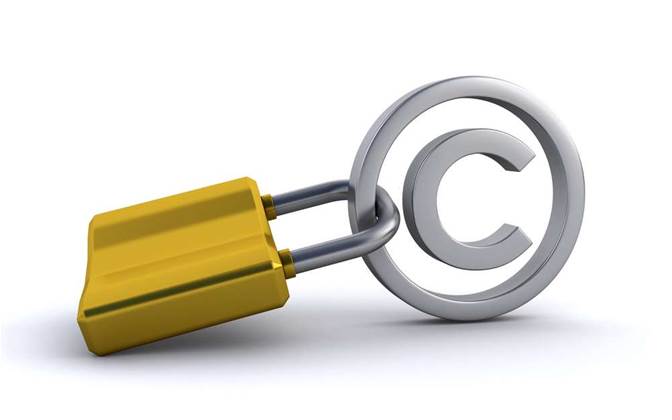Patents have been getting a lot of media attention lately, with the recent gene patent debate and the Apple-versus-Samsung patent war polarising public opinion.

There are those who think inventions should not be owned by anyone and the Australian public should be entitled to use them. Then there are those who believe patents are essential to get investors to risk investing in new technologies developed here in Australia.
Amongst all this debate, what has not been considered are Australia's provisions for compulsory licences.
This mechanism was put in place by law makers years ago to balance the need for incentives to innovate with the public's need to access patented technology such as medicines.
In Australia, when the patent holder is not properly making use of the patented invention, the Federal Court can grant a compulsory licence authorising the use of the patented invention.
Any person may apply to the Federal Court for a compulsory licence after three years from the date when the patent was granted.
While compulsory licenses can be granted in theory, in practice they have been very difficult to obtain.
In an effort to address this practical difficulty, an inquiry by the Productivity Commission has been commissioned into whether our provisions for compulsory licensing of patents should be changed.
Many expect the Productivity Commission to use this opportunity to suggest a middle ground between incentives to innovate and the public's access to technology.
Helping IT start-ups
In the software industry, IT start-ups are justifiably worried about patent trolls. Patent trolls are patent holders who do not use the inventions covered by their patents. Instead, they use their patents as leverage for financial gain by threatening potential infringers in the market with litigation.
This means that in developing and using their new software, a small IT start-up could risk infringing any number of patents without even knowing it.
The very real threat of patent litigation can sometimes be enough to derail the commercialisation plans of small IT start-ups.
Many feel patent trolls misuse their patent rights for financial gain in an anti-competitive way.
In response, there have been calls from the IT industry to prevent the granting of patents for software and IT technologies.
However, IT start-ups also need patents in order to obtain investment. In fact, often the only asset an IT start-up company can offer an investor as security is a patent.
Abolishing software patents to provide protection against patent trolls cannot be the answer, but perhaps compulsory licences can.
If IT start-ups gained access to inventions that are not used in Australia through a compulsory licence, this could reduce the ability of patent trolls to threaten small IT start-ups.
Read on for the compulsory license application process and the success rate of local applicants.
But how realistic are compulsory licences?
To our knowledge, no one has ever successfully obtained a compulsory licence in Australia.
Our law makes it very difficult, in fact virtually impossible, to do so, with applicants required to provide evidence which is difficult to obtain.
They must first prove they have tried, without success, to obtain a licence from the patent holder to use the invention in Australia on reasonable terms and conditions.
Next, they must prove that the reasonable requirements of the public for the patented invention have not been met.
Lastly, they must prove that the patent holder has given no satisfactory reason for their failure to use the invention in Australia.
Successfully proving all of this to the court is a tall order.
In one case, the applicant for the compulsory licence could not show that there was a market demand for the invention, and so was refused a licence.
In the face of this example, many feel that the procedure and requirements of obtaining a compulsory licence in Australia are just too difficult.
The uncertainty of a compulsory licence may also discourage those who would have attempted to travel this road.
In one case, the person applying the compulsory licence successfully managed to convince the court that the reasonable needs of the public had not been met because the patentee was not producing the patented invention at all.
However, before the matter had been finalised, the patentee started producing the patented invention, and so the compulsory licence was denied.
A compulsory licence is not a contract; it is a court order, granted for the 'public good' in specific circumstances only.
The court can revoke a compulsory licence at any time when the circumstances which justified it cease to exist.
Importantly, compulsory licences are not free. The patentee is still entitled to be paid for the licence, even though it is granted by the court.
However, the parties will need to come to an agreement on how much the patentee should be paid.
If the parties can't agree, then it will be up to the court to decide what the rate of payment should be, taking into account the economic value of the licence.
A compulsory licence cannot be exclusive. This means the courts can grant more than one compulsory licence for the same patented invention.
A licencee gaining access to the patented invention through a compulsory licence will need to accept that they will not be getting a monopoly to sell the patented invention.
How this affects the Australian business community
If the compulsory licensing provisions are simplified, as it is expected the Productivity Commission will recommend, it may become much easier for IT start-ups to access patented IT inventions for a licence fee at a market rate.
Such changes may also assist healthcare bodies gain access to much-needed medical devices and medicines for lower fees than would normally be payable.
This could open up options for increased benefits under our healthcare system, without alienating those producing the new innovations.
If you are a patent holder, such changes could mean you may need to ensure you are commercialising and/or using the invention you have patented in Australia.
Without using the invention in Australia, or failing to adequately meet the 'reasonable requirements of the public', patent holders could risk their patent becoming the subject of a compulsory licence.
Although still entitled to be paid a licence fee, the patent holder may find their patent reduced in value as a result of the granting of a compulsory licence.
This could in turn affect any licensing agreements the patent holder may wish to enter into in the future.
Dr Vicky Longshaw is a Patent Attorney and Mr Joe Seisdedos is a Senior Associate with Wrays, a national law firm, working in all areas of intellectual property.


_(22).jpg&h=140&w=231&c=1&s=0)
.png&h=140&w=231&c=1&s=0)
_(20).jpg&h=140&w=231&c=1&s=0)






 iTnews Executive Retreat - Security Leaders Edition
iTnews Executive Retreat - Security Leaders Edition











_(1).jpg&h=140&w=231&c=1&s=0)



